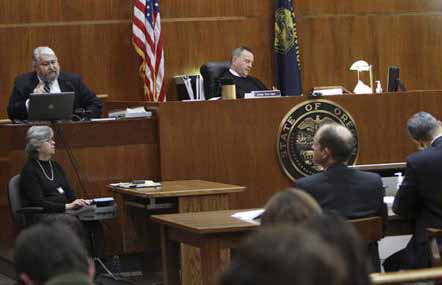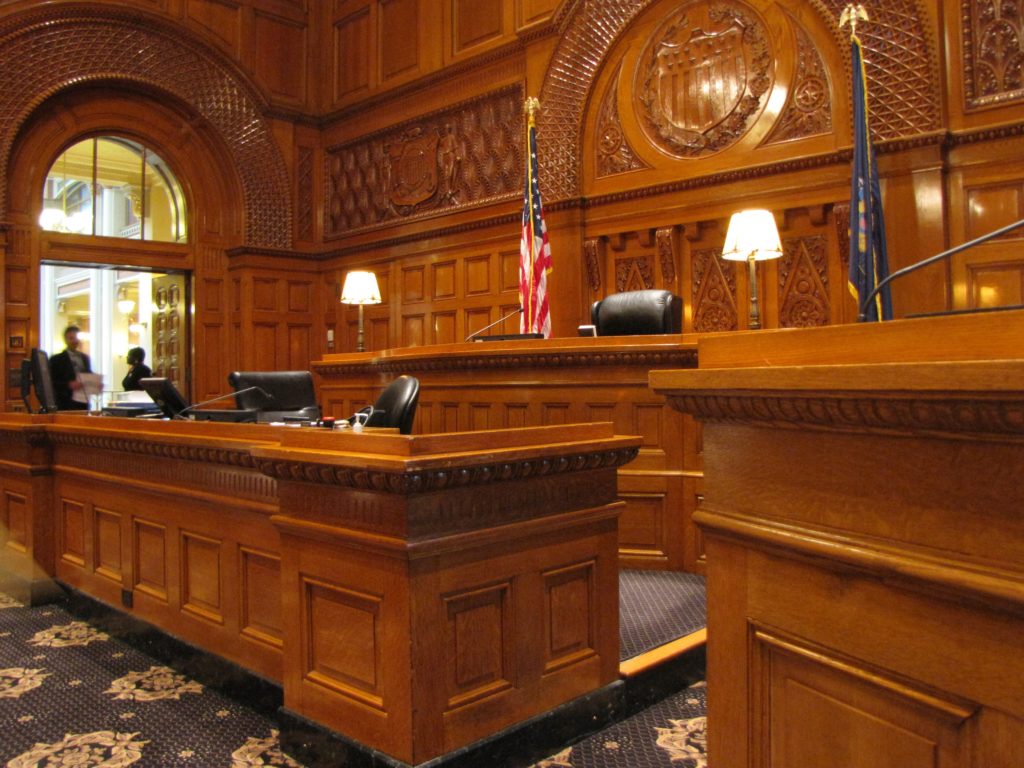Senior level environmental risk managers are often involved in environmental litigation requiring knowledge of complex matters concerning natural resources management, resource assessments, contamination, remediation, cost allocation, and cost recovery. Many of these cases rely on scientists and engineers to provide technical consultation related to these environmental issues. It behooves risk managers to be aware of certain limitations of the expert witness to assist their attorney in building a winning legal strategy for environmental litigation.
In this blog, Dr. Leo Leonhart discusses four limitations of the expert witness’s role in environmental litigation.
What is Environmental Forensics?
Forensics and environment are two terms that may not seem to go together well. To the uninitiated, this combination may evoke images of the crime scene investigation that ensues when some patsy goes into the drink wearing cement overshoes. Rather, the term environmental forensics has found its way into contemporary parlance owing to increasing instances of scientists lending support for environmental litigation. Such support may come in the form of expert testimony, factual testimony regarding site investigation matters, or simply consultations with attorneys to identify and explain the technical merits of a case. A scientist or engineer may even become involved in litigation related to errors and omissions arising from his/her own professional practice.
Most commonly, environmental forensics involves “… scientific investigations that address contamination within the environmental media of air, water, soil and biota, and is subject to law court, arbitration, public debate, or formal argumentation” (International Society of Environmental Forensics).
But environmental forensics is not necessarily limited to contamination issues. It may also be concerned with such matters as flooding, drainage, runoff, water supply, pumping, or design failures involving dams, bridges, or impoundments. Regardless of the circumstances, it behooves risk managers to be aware of certain realities well before becoming involved in environmental legal matters.
1. An Expert Witness is Not the Client’s Advocate
First and foremost, there are important differences in the respective roles of attorneys and testifying experts in the courtroom. Attorneys are advocates who speak on behalf of or in defense of the client. In fact, the word advocate derives from a root word meaning lawyer; in French and Italian, the words meaning lawyer are avocat and avvocato, respectively.
Although scientists and engineers may be retained as testifying experts by the attorney representing the client, they are not hired to be client advocates. Technical experts are bound by the ethical rules of scientific practice and are required by these standards to be factual and objective when called upon to offer an opinion in such situations. And of course, they are sworn to tell the truth when giving testimony before the court.
Ethical practice in scientific investigation usually means adherence to precise procedures and methods. Fundamentally, the scientific method is a systematic procedure for understanding natural phenomena that comprises observation, hypothesis, experiment, validation, and generalization. Good science requires objective adherence to this method. Junk science results from short-cutting or avoiding this method.
In court, testifying experts may be called upon to opine on a variety of issues that are relevant and important to the decision before the court. For example:
- Cause and effect: Did pumping of the well cause another well to go dry?
- Allocation: How do we apportion blame for contamination among multiple parties?
- Timing: What is the sequence of events that led to this damage? Did this damage occur within a determinable timeframe?
- Exposure: Is there a complete groundwater pathway between a source of contamination and a well (or other point of exposure)? If so, what is the travel time? What was the historical distribution (concentration) of contaminants?
2. Expert Testimony Must Meet Specific Admissibility Criteria
Because of inherent uncertainties in scientific practice, opinions are often qualified. This uncertainty often is not comforting to the attorney. Experts may be pressed by the client’s or the opposing attorney to characterize the uncertainty of their opinions with such qualifications as:
- “More often than not …”
- “To the best of my knowledge and belief …”
- “At the present time …”
- “Based on the materials that I have reviewed …”
Attorneys are generally uncomfortable with opinions that present alternative hypotheses, limitations, uncertainties, and assumptions about the investigation that might invalidate conclusions.
Other considerations are the so-called “Daubert criteria,” which originated as a result of a federal court decision, Daubert v. Merrell Dow Pharmaceuticals, Inc. This decision established the trial judge as a gatekeeper for admissibility of expert testimony and established criteria for determining such admissibility. The essential criteria involve a demonstration of the relevance of the testimony to the legal matter of the trial and, secondly, its reliability.
As to relevance, it simply must be demonstrated that the expert’s testimony supports facts of consequence to the trial’s outcome. The reliability criteria, however, invoke questions that more directly challenge the quality of the science underlying the testimony.
Specifically, regarding the methodology used to arrive at the expert opinion:
- Has it been tested?
- Has it been subjected to peer review or publication?
- Are the error rates known or quantifiable?
- Are there standards controlling its use?
- Is the underlying theory of the methodology generally accepted in the relevant scientific community?
If the opposing counsel can demonstrate shortcomings in one or more of these criteria, a Daubert challenge may be made, and, if successful, the testimony may be ruled inadmissible by the judge.
3. There is a Limited Scope of Testimony

At this point, one might ask how it would be possible for opposing technical experts, faithfully abiding by all these rules and standards, to legitimately have opposing opinions on a particular technical matter. This happens commonly in technical forums, and therefore it can happen in the courtroom.
However, in litigation support, the conflicts may or may not be real, depending on how the attorneys orchestrate them. Remember, the answers you get depend largely on the questions that you ask.
Experts who are retained by attorneys are not given free reign over their investigations. Generally, they are asked specific questions and the scope of their investigation is therefore limited. The concept of the “whole truth” may be jeopardized by this strategy and hence the aforementioned qualifications become important in terms of the witness’ integrity and credibility.
For example, an opinion about the extent of a contaminant plume in groundwater may or may not be answered based on a complete data set. A decision to drill a new well or wells to fill in a data gap is generally made by counsel, based on expectations of the outcome.
4. There Is No Single Standard for Expert Testimony in Environmental Litigation
Whether or not there is a need to regulate or standardize the conduct of scientists
in the courtroom could be a matter of continuing debate. Indeed, if all were to practice within the bounds of good science and ethics, it would not be so much a matter of discussion.
Some professional organizations have begun to consider whether rules and standards should be set for their members’ involvement in litigation. For example, the State of Arizona’s Board of Technical Registration promulgated a rule prohibiting a registered professional engineer from providing expert witness services if compensation is based all or in part on a contingency fee related to the outcome of the dispute.
Environmental Scientists and Engineers Can Support You in a Variety of Legal Matters
Understanding these four limitations of an expert witness will help you select a scientist with the knowledge and experience to support the specifics of your case. The best experts make data easy to understand, help you communicate critical issues to a non-technical audience, and are available to support your investigations, deposition, trial, mediation, and settlement negotiations.
Depending on your specific needs, environmental experts can assist you in responding to notice of violations, managing liabilities, negotiating of Remedial Action and Consent Agreements with regulatory agencies, prepare risk and financial assessments, and even help with public relations issues.
Learn more about these practical applications in Hargis’s Statement of Qualifications.
About the Author

Dr. Leo Leonhart, PhD, RG, CHG
Principal Hydrogeologist/ Senior
Technical Director
Hargis + Associates, Inc.
lleonhart@hargis.com
Dr. Leo Leonhart has professional experience in geology, hydrogeology, and environmental science since 1974. His technical experience includes individual contributions and management roles in government, industry, and academia, and in operations and technical management in environmental consulting. His technical work experience is diverse including hydrogeologic investigations, watershed studies, and environmental assessments. He has managed technical teams of scientists and engineers and engaged in university teaching research as well as management of work by technical subcontractors and consultants. Additionally, he has consulted with various Native American Tribes providing technical workshops and recommendations for addressing cultural and environmental issues.
This blog was adapted from an article by Dr. Leo Leonhart published in the July/August 2007 issue of Southwest Hydrology.

